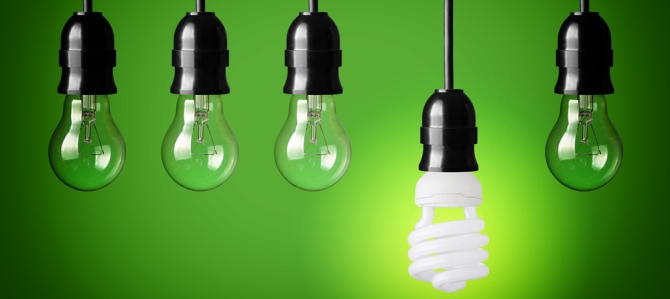Energy and Greenhouse Gas Emissions
Energy and Greenhouse Gas Emissions
The Canal Building, which opened in January 2011, employs many new building automation technologies which are being piloted for future application on the campus.

Carleton University currently emits approximately 36,560 metric tons of carbon dioxide equivalents (MTCO2e), reflective of Carleton’s heating, cooling, electricity and use of fleet vehicles.
It has now been recognized that greenhouse gas emissions are having a huge impact on the environment at a global level. Reducing Carleton’s emissions and use of energy in general (adjusted to a per square metre or Full-Time Equivalent (FTE) student) is a key component of a sustainability strategy. Furthermore, it is also a component where reductions will lead to positive outcomes in all three areas of sustainability – environmental, economic and social.
The university continues to upgrade technologies and use automation where possible. The Canal Building, which opened in January 2011, employs many new building automation technologies which are being piloted for future application on the campus. The pilot results will be monitored to assess success and maximize gains. The university is home to faculty, researchers, and research centers that are seeking to augment our understanding of climate change and the actions that will positively impact this global issue.
How can you… save energy?
Turn off lights when not needed
Whenever possible, turn off the lights when not needed, as your leave your workplace, and always at the end of the day.
Compact Fluorescent Lights (CFL’s) use significantly less energy than traditional bulbs and last longer. However, the elements inside CLF’s make the bulbs toxic once they burn out or break, so follow the correct procedures when dealing with old or spent bulbs.
Here on campus we have a dedicated bulb crusher, to safely and responsibly dispose of our old light bulbs before onward collection.
What can you do?
- Buy energy-efficient (ENERGY-STAR rated) light bulbs
Enable power management on my computer
Setting your computer to standby or sleep mode after a few minutes of inactivity will use up to 80% less energy than leaving it awake, and will only increase boot-up time by a few seconds.
Additionally, unplugging your computer and letting the battery drain (instead of leaving the computer plugged in whenever possible) extends overall battery life, reducing your consumption of electronic goods.
What can you do?
- Learn how to power manage your computer
- Unplug your computer when you do not need to charge it
Wash my clothes in cold water
90% of the energy used in washing clothes comes from heating the water. If you switch to cold water for washing your clothes, you can save up to $35 a year just in heating bills. If you use warm instead of hot water you can cut your energy use in half.
Using cold water also makes your clothes last longer and prevent color bleeding, preventing unnecessary consumption of clothes.
What can you do?
- Put a note on your washing machine to use only cold water
Replace incandescent light fixtures with Compact Fluorescent Light (CFL) bulbs
On average CFL’s use 75% less energy than traditional bulbs, plus they last 10 times as long. Just make sure to properly recycle it when it eventually burns out because it can be reused and throwing it away will leach harmful chemicals, like mercury, into the soil.
Plug electronics into power strips
Plugged-in electronics use energy, even when they are turned off. This “vampire energy” that is never actually implemented can end up costing you hundreds of dollars every year. Be sure to turn off power strips when not in use or simply unplug the cords you are not currently using.
What can you do?
- Write notes on appliances to remind yourself to unplug them
- Buy a smart power strip that will automatically keep appliances from using vampire energy
Take the stairs, not the elevator
Although opting out of the elevator once does not save much energy, over the course of the year it is possible to save enough energy to power a plasma TV for 48 hours. Plus, taking the stairs burns upwards of 5 Calories a minute and strengthens cardiovascular and lower-body strength.
Use blinds and shades more effectively
You may not realize it, but you can significantly warm a room (or cool it down) by what you choose to do with your window treatments. During the daytime, if you have bright sunlight coming directly through your window, this will heat up a room significantly. If you are trying to keep a room warm at night, put the shades or curtains down, so that heat doesn’t leak out the windows.
Defrost your freezer periodically
Regularly defrost manual-defrost freezers and refrigerators; frost buildup decreases the energy efficiency of the unit. Don’t allow frost to build up more than one-quarter of an inch.
Set your thermostat 2 degrees cooler or warmer
Each degree below 78, when you are trying to cool your home, will increase your energy use by 3-4%. So don’t set your A/C lower than 78 when you are trying to cool your home, a good goal is leaving it at 80. Doing so can save you about $19 from your bill and CO2 from the atmosphere
In the winter months when you are trying to heat your home set the temperature 2 degrees lower than normal and bundle up, rather than wearing a tee-shirt around.
What can you do?
- Turn off your A/C or heater while you are not at home
- Close A/C or heater vents that lead to rooms you do not use often
- Invest in blankets and try to cuddle up to feel warm before turning up the heat
- Insulate the walls of your house or apartment to ensure the air you are heating is not escaping
Take the Sustainability Pledge and commit personally to a more sustainable University.
Energy News
No category posts are available.